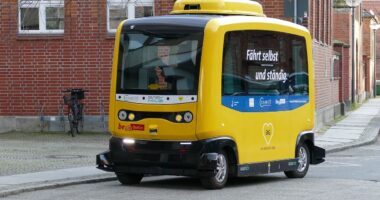Artificial Intelligence (AI) is transforming industries at a rapid pace, leading to significant changes in the workforce. As AI technologies become more advanced, there is growing concern about their potential to replace human jobs. This article delves into the various aspects of AI’s impact on employment, examining both the potential for job displacement and the creation of new opportunities.
1. The Scope of AI in the Workforce
AI is being integrated into numerous sectors, including manufacturing, healthcare, finance, and customer service. Its ability to perform tasks with high precision and efficiency makes it an attractive alternative to human labor for many repetitive and data-driven tasks. For instance:
- Manufacturing: AI-powered robots can perform assembly line tasks faster and more accurately than humans.
- Healthcare: AI systems can analyze medical images and patient data, assisting doctors in diagnosis and treatment planning.
- Finance: AI algorithms can process vast amounts of financial data, detecting fraud and optimizing investment strategies.
2. Potential for Job Displacement
The automation of tasks traditionally performed by humans raises concerns about job displacement. Several studies have highlighted the potential for AI to replace a significant number of jobs in the coming decades. Key considerations include:
- Routine Jobs: Positions involving repetitive tasks are most at risk. This includes jobs in manufacturing, data entry, and some aspects of customer service.
- Low-Skill Jobs: Low-skill positions, where tasks are straightforward and can be easily automated, are particularly vulnerable to AI replacement.
- Impact on Specific Sectors: Certain industries, such as transportation, may experience more significant disruptions due to advancements in autonomous vehicles and AI-driven logistics.
3. Creation of New Opportunities
While AI poses a risk to certain jobs, it also has the potential to create new roles and opportunities. The development and maintenance of AI systems require a skilled workforce, leading to demand for new job categories. Examples include:
- AI Specialists: Roles such as AI researchers, data scientists, and machine learning engineers are in high demand.
- Tech Support and Maintenance: The implementation of AI systems necessitates ongoing support and maintenance, creating jobs in tech support and system management.
- New Industries: AI is driving the emergence of new industries and business models, such as AI-driven healthcare services, which can generate employment opportunities.
4. Reskilling and Upskilling
To mitigate the impact of AI on employment, reskilling and upskilling initiatives are essential. Workers need opportunities to acquire new skills that align with the evolving job market. Key strategies include:
- Government Programs: Public policies and programs aimed at workforce development can help workers transition to new roles.
- Corporate Training: Companies can invest in training programs to reskill their employees, preparing them for AI-related positions.
- Educational Institutions: Schools and universities can update their curricula to include AI and technology-related subjects, equipping future generations with relevant skills.
5. The Future of Work
The integration of AI into the workforce will likely lead to a hybrid model, where humans and AI systems collaborate to achieve optimal results. Key considerations for the future of work include:
- Human-AI Collaboration: AI can augment human capabilities, leading to increased productivity and efficiency. For example, AI can handle data analysis, allowing humans to focus on strategic decision-making.
- Flexible Work Arrangements: The rise of AI may lead to more flexible work arrangements, such as remote work and gig economy opportunities.
- Focus on Creativity and Interpersonal Skills: As AI handles more routine tasks, human workers may increasingly focus on roles that require creativity, problem-solving, and interpersonal skills.
6. Ethical Considerations
The deployment of AI in the workforce raises ethical concerns that need to be addressed to ensure a fair and inclusive transition. These include:
- Fair Labor Practices: Ensuring that workers displaced by AI are treated fairly and provided with adequate support.
- Equitable Access: Making sure that the benefits of AI are distributed equitably, preventing exacerbation of existing inequalities.
- Transparent Communication: Employers should transparently communicate AI integration plans and their potential impact on the workforce.
Conclusion
AI has the potential to significantly impact employment, both positively and negatively. While there is a risk of job displacement, AI also offers opportunities for the creation of new roles and industries. The key to navigating this transition lies in proactive measures such as reskilling, upskilling, and ethical considerations to ensure that the workforce adapts to the evolving landscape. By embracing AI while addressing its challenges, we can harness its potential to create a more efficient and innovative future of work.





